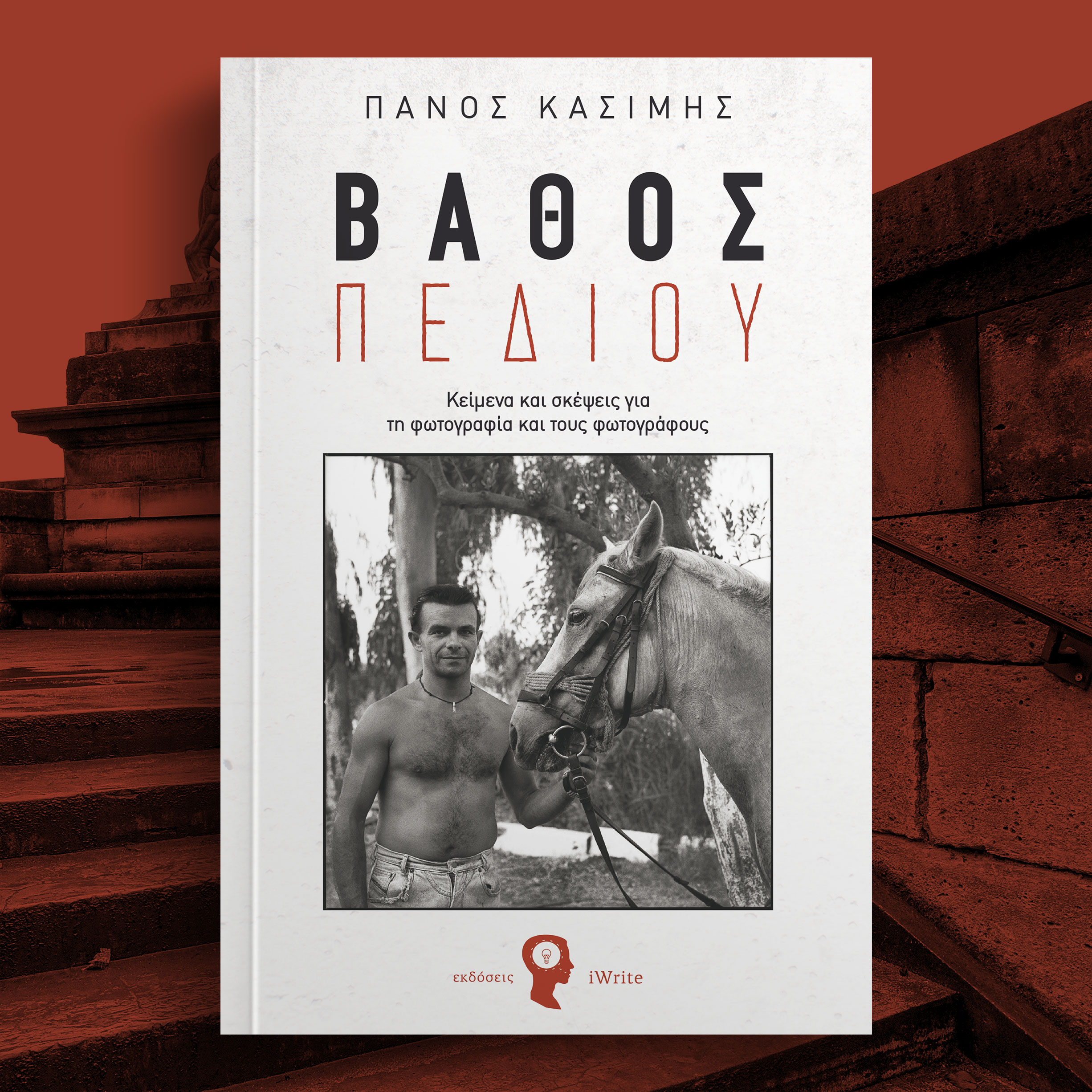Ο μύθος της τέλειας φωτογραφίας
(και η διάψευσή του μέσα από το βιβλίο «Βάθος Πεδίου»)
Η αρχή του μύθου
Από το βιβλίο «Βάθος Πεδίου», του Πάνου Κασίμη: Πολλοί από εμάς ανατράφηκαν με τη μυθολογία της μίας, της σπουδαίας φωτογραφίας ή της εικόνας που «άλλαξε τον κόσμο», της εικόνας που «αξίζει χίλιες λέξεις». Ακόμη και σήμερα, πολλοί, νέοι στον κόσμο της φωτογραφίας, «κυνηγούν» τη μία, την «καλή» φωτογραφία, κάθε φορά που σηκώνουν τη φωτογραφική μηχανή στο μάτι τους. Ίσως γιατί δεν διδάσκονται τρόπους σύνδεσης των φωτογραφιών τους ώστε να αποτελέσουν μια ενιαία πρόταση. Ίσως γιατί πιστεύουν στον μύθο της «Μίας» φωτογραφίας, όπως κι εμείς, κάποτε. Πιστεύω πως είναι καιρός να εγκαταλείψουμε πια αυτή τη μυθολογία και να σταματήσουμε να την αναπαράγουμε.
Αν και οι μεμονωμένες φωτογραφίες έχουν τη θέση τους, όλο και περισσότερο βρίσκω ότι η φωτογραφία, ως ηθική και αισθητική πρακτική που κινητοποιείται από την ενσυναίσθηση, παρεμποδίζεται από τις μοναδικές και θεαματικές εικόνες. Κι ενώ πάντα θα απολαμβάνουμε τις μεμονωμένες καλές φωτογραφίες, υπάρχει μια εξίσου τεράστια απόλαυση σ’ ένα σώμα φωτογραφικού έργου. Είτε θα είναι μια σειρά φωτογραφιών, που παρουσιάζουν το προσωπικό όραμα σε συνέργεια με το θέμα.
Το σκέφτομαι ως τη διαφορά ανάμεσα σε μια άψογα μαγειρεμένη συνταγή κι ένα αξέχαστο γεύμα. Το τελευταίο όχι μόνο περιέχει πολλά πιάτα, αλλά συνδέεται επίσης με την παρέα, το περιβάλλον, την ημερομηνία (χρόνο) που έλαβε χώρα και τη διάθεση. Αυτό σημαίνει ότι η έννοια της καθαρότητας, της αντικειμενικής ειλικρίνειας ή της σπουδαιότητας μιας συγκεκριμένης φωτογραφίας. Είτε ακόμα και μιας δεδομένης σειράς φωτογραφιών, σε ορισμένες περιπτώσεις) μάλλον είναι υπερεκτιμημένη.
Σχεδόν πάντα ήταν βολικό για εκείνους που είναι «κοινωνικοποιημένοι», που ανήκουν σε ομάδες και κολεκτίβες, να σκέφτονται ότι –τόσο η ομάδα όσο και οι ίδιοι– είναι «ξεχωριστοί» και «ιδιαίτεροι» και να επιμένουν σε αυτή την καθαρότητα, ενώ όλοι οι άλλοι απλώς παίζουν το παιχνίδι ανεύρεσης καλλιτεχνικής ταυτότητας.
Η ιδέα και η φύση της φωτογραφίας
Όπως βλέπουμε και στο βιβλίο, η ιδέα μοιάζει να είναι ότι μια φωτογραφία (ή ένα είδος φωτογραφίας ή φωτογραφικό στυλ) υποστηριζόμενη από μια ομάδα ατόμων έχει περισσότερες πιθανότητες να ενταχθεί στο καλλιτεχνικό στερέωμα απ’ ό,τι μια ομάδα φωτογραφιών που υποστηρίζεται από ένα άτομο. Και όλοι μπορούν να συνεχίσουν να κάνουν καλή δουλειά. Ή, τουλάχιστον, να προσπαθούν. Η φωτογραφία είναι από τη φύση της ένα παρεμβατικό μέσο και το τελικό της αποτέλεσμα –η φωτογραφική εικόνα– είναι κι αυτό ένα υπόλειμμα των κοινωνικών συμβάσεων και δραστηριοτήτων. Ένα συγκεκριμένο άτομο, σε ένα συγκεκριμένο μέρος, με συγκεκριμένο εξοπλισμό, σε συγκεκριμένο χρόνο, φωτογραφίζει ορισμένα άλλα άτομα ή τοπία ή ιστορίες. Όλες αυτές οι πληροφορίες είναι σιωπηλές στην εικόνα.
Συνήθως υπαινίσσονται. Συχνά είναι υπερβολικά σιωπηλές. Είναι δυνατό, ίσως ακόμα κι επιθυμητό, το υπαινισσόμενο, το έμμεσο, να γίνει λίγο πιο σαφές, όμως με καλλιτεχνικούς τρόπους. Κι αυτοί οι τρόποι δεν είναι τα εκτενή κείμενα δίπλα στην παρουσιαζόμενη μια φωτογραφία, αλλά η ανάπτυξη του φωτογραφικού λόγου μέσα από τη σύνδεση των φωτογραφιών, τόσο μεταξύ τους όσο και με τον ίδιο τον φωτογράφο.
Οι «επεξηγήσεις» δεν μπορούν να αποσταλούν υπό μορφή τηλεγραφήματος. Επίσης ο λόγος ύπαρξης της φωτογραφίας δεν χρειάζεται να δικαιολογείται απλώς γράφοντας ένα κείμενο ή μια λεζάντα. (Αν και, στην πραγματικότητα, μερικές φορές δεν είναι μια λεζάντα αυτό που χρειάζεται. Μερικές φορές αυτό που χρειάζεται είναι ένα παράθυρο ή ένα ποτάμι ή ένας αναπτήρας.)
Γνωρίζοντας την απάντηση στις συνηθέστερες ερωτήσεις –ποιος δημιούργησε τη φωτογραφία ή πού τραβήχτηκε– είναι ίσως τα ελάχιστα κομμάτια πληροφοριών που πιθανόν να μπορέσουν να οδηγήσουν στην περαιτέρω επαφή και, γιατί όχι, στην απόλαυση της φωτογραφικής εικόνας/εργασίας. Αλλά οπωσδήποτε δεν τελειώνει εκεί. Από εκεί αρχίζει. Η «μία» φωτογραφία είναι απλώς μια αρχή. Υπάρχουν κι άλλες φωτογραφίες, όπως υπάρχουν κι άλλα κείμενα, κι άλλα ποιήματα, κι άλλες σκέψεις. Για να δούμε και να έρθουμε σε πραγματική και ουσιαστική επαφή με τον κόσμο μέσω της φωτογραφίας, η εγκατάλειψη «αυτοκρατορικών» συμπεριφορών είναι ευθύνη όλων. Δεν υπάρχει θέα από το πουθενά.
Πάνος Κασίμης
Συγγραφέας – Καθηγητής Φωτογραφίας (βιβλίο «Βάθος Πεδίου»)

